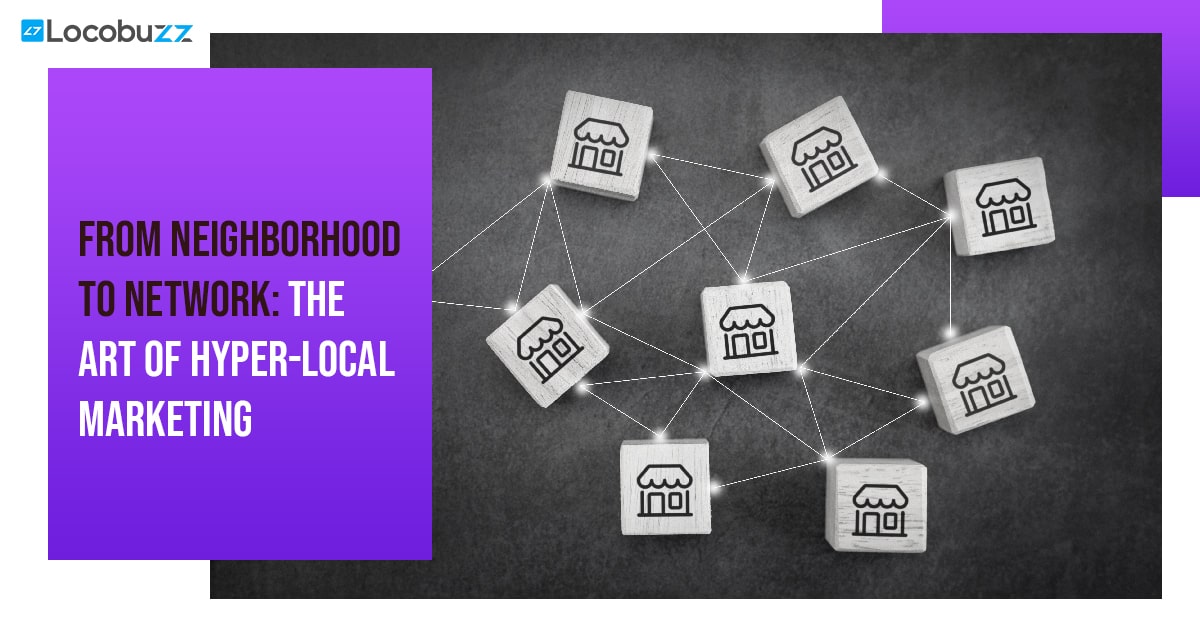Using Brand Metrics to Achieve Valuable Insights in Businesses
 In today’s fiercely competitive marketplace, it’s crucial for businesses to build a strong brand to achieve success. However, it’s not sufficient to just create a brand; companies must also comprehend how their brand is perceived by customers and improve their brand positioning over time. That’s where brand metrics come in handy.
In today’s fiercely competitive marketplace, it’s crucial for businesses to build a strong brand to achieve success. However, it’s not sufficient to just create a brand; companies must also comprehend how their brand is perceived by customers and improve their brand positioning over time. That’s where brand metrics come in handy.
In this blog, we’ll delve into how businesses can use brand metrics to their advantage, boosting their brand positioning and staying ahead of the competition. This blog will also cover on how businesses can Achieve Excellence with Locobuzz #CXSuite
Table of Contents
What is Band Metrics?
Brand metrics are measurable indicators of how customers perceive and interact with a brand. These measurements include things like brand awareness, customer loyalty, and customer satisfaction.
Imagine your brand is a person, with a personality, values, and reputation. Brand metrics are like the vital signs that tell you how healthy your brand is. Just like a doctor checks your heart rate, blood pressure, and other metrics to assess your physical health, businesses use brand metrics to assess the health of their brand.
Brand metrics are measurements that tell you how customers perceive your brand, how well they recognize it, and how loyal they are to it. These measurements include things like brand awareness, customer satisfaction, and customer loyalty. By monitoring these metrics over time, businesses can gain insights into how their brand is performing and identify areas where improvements can be made.
Think of brand metrics like a roadmap that helps guide your branding strategy. Just as a GPS gives you directions to reach your destination, brand metrics can help you make decisions about how to improve your brand and stay on track. By keeping a close eye on your brand metrics and making adjustments as needed, you can ensure that your brand is healthy, strong, and competitive in today’s marketplace.
By tracking brand metrics over time, businesses can gain valuable insights into their brand’s performance and make informed decisions to improve their brand strategy. Think of brand metrics as the vital signs of your brand’s health, helping you keep it strong and competitive in today’s marketplace. Let’s deep dive into knowing more about brand metrics.
As a marketer or business owner, it’s important to keep an eye on branding metrics to gain a better understanding of your brand’s success and make informed decisions. Tracking these metrics will give you a comprehensive view of your brand’s performance, enabling you to maximize your branding efforts and drive business growth.
Why Are Brand Metrics Important?
Measuring Brand Metrics to Gain a Competitive Advantage
In today’s cutthroat business landscape, standing out from the competition is more critical than ever. One way businesses can do this is by using brand metrics to track and evaluate the success of their branding efforts. By measuring and analyzing these metrics, companies can gain valuable insights into the effectiveness of their branding strategies and make informed decisions to improve their competitive position.
Brand metrics are a set of measurable parameters that help businesses understand how their brand is perceived in the market. Tracking brand awareness, for instance, can help companies identify opportunities to increase their brand visibility. Measuring brand perception, on the other hand, can help them improve their brand image and better align their messaging with customer expectations.
Brand loyalty is another important metric that measures how committed customers are to a particular brand. By identifying their most loyal customers, businesses can create targeted marketing campaigns to retain them. Brand equity, which encompasses a brand’s reputation, customer loyalty, and recognition, can also help companies understand their brand’s position in the market and identify opportunities to increase its value.
Customer satisfaction is yet another important metric that measures how satisfied customers are with a brand’s products or services. Measuring customer satisfaction can help businesses identify areas where they can improve their offerings and create more loyal customers.
To stay ahead of their competitors, businesses must regularly track these metrics and use the insights gained to refine their branding strategies. By monitoring these metrics over time, companies can monitor their progress and make data-driven decisions to improve their position in the market.
Apart from brand metrics, businesses can also use tools like Locobuzz to gain a deeper understanding of their customers’ sentiment and preferences. Locobuzz provides businesses with real-time insights into customer feedback across various channels, enabling them to make more informed decisions and improve their competitive position.
In conclusion, measuring brand metrics is crucial for businesses looking to gain a competitive advantage. By tracking and analyzing these metrics, companies can gain a better understanding of their brand position in the market and make informed decisions to stay ahead of their competitors.
How will brand metrics add value for businesses?
How to Use Brand Metrics to Identify and Address Brand Weaknesses
As a business owner, you probably know that your brand is crucial to your success. It’s how your customers recognize you, and it’s what sets you apart from your competition. But how do you know if your brand is strong enough to stand out in today’s crowded marketplace? The answer lies in tracking your brand metrics.
By tracking key brand metrics like brand awareness, brand loyalty, and brand perception, you can gain valuable insights into how your customers perceive your brand. This information can help you identify areas where you may be falling short and make changes to improve your brand’s overall perception.
Gathering data for brand metrics can come from various sources like surveys, social media analytics, website analytics, and more. Once you have this data, it’s essential to analyze it thoroughly to identify patterns and trends that can help you improve your brand.
Once you have identified any weaknesses in your brand, you can take steps to address them. This could involve changes to your branding strategy, marketing campaigns, or customer service practices. By taking these steps, you can improve customer satisfaction, build brand loyalty, and ultimately drive business growth.
Remember, tracking your brand metrics is an ongoing process. By regularly monitoring and analyzing your brand metrics, you can stay ahead of the competition and ensure that your brand is always strong enough to stand out in today’s ever-changing marketplace.
Why is brand awareness the key metric used to measure the success of a brand?
Leveraging Brand Metrics
One way to leverage brand metrics for enhancing brand positioning is to use them to guide your brand strategy. By analyzing your metrics and identifying patterns and trends, you can make informed decisions about how to position your brand in the market. For example, if you notice that your brand is performing well with a particular demographic, you may want to focus your marketing efforts on that group.
Another way to leverage brand metrics for enhancing brand positioning is to use them to measure the effectiveness of your branding efforts. By tracking metrics like brand awareness and customer perception, you can see how well your branding campaigns are resonating with your target audience. This information can help you make adjustments to your campaigns and improve your brand positioning over time.
leveraging brand metrics can help businesses to enhance their brand positioning by providing valuable insights into how their brand is performing and identifying areas for improvement. By using these metrics to guide their brand strategy and measure the effectiveness of their branding efforts, businesses can stay ahead of the competition and build a strong, competitive brand.
The Importance of Consistency in Brand Metrics Tracking
- Consistent brand metrics tracking ensures that businesses have reliable and accurate data to base their decisions on. By measuring and tracking the same metrics over time, businesses can identify trends and patterns in customer behavior and make informed decisions based on this data. Better planning of brand metrics brings to light and allocate resources for their branding efforts. By understanding how their branding strategies are performing over time, companies can make data-driven decisions about where to invest their time, money, and resources.
- Measuring Brand perception will help businesses maintain a consistent brand image and messaging. By tracking brand perception metrics like brand recognition and brand loyalty, companies can ensure that they are delivering a consistent brand experience to their customers across all touchpoints.
- Consistent brand metrics tracking enables businesses to stay ahead of their competitors by identifying opportunities for improvement and adjusting their branding strategies accordingly. By consistently tracking brand metrics, companies can respond quickly to changing market conditions and customer preferences.
- To ensure consistency in brand metrics tracking, businesses should establish clear goals and KPIs for their branding efforts and measure and track these metrics consistently over time. They should also use tools like Locobuzz to monitor their brand metrics in real-time and gain insights into customer sentiment and feedback.
Top 10 Metrics to Measure in Brand Metrics
Making wise decisions and promoting growth require measuring the success of your brand. Here are the top 10 brand metrics to monitor and gauge.
- Awareness On how successfully your target market is able to identify and remember your brand
- Perception How your consumers view your brand’s worth, reputation, and quality
- Reputation Is the general reputation and image of your brand in the marketplace.
- Loyalty Is where you check the level of brand loyalty and repeat business you receive from customers.
- Satisfaction Is knowing how satisfied customers are with their experiences with your brand.
- Engagement is about knowing level of interaction and involvement customers have with your brand.
- Acquisition Is where you check the procedure of gaining new clients through marketing initiatives.
- Retention has to do with the frequency with which people stay loyal to your brand over time.
- Referral Is about knowing the frequency with which customers spread the word about your brand.
- Advocacy is about checking degree to which consumers actively spread the word about your brand.
These metrics provide a comprehensive view of a brand’s performance and should be tracked and measured regularly to see how the brand is evolving over time.
Using Brand Metrics to Monitor and Respond to Customer Feedback
By tracking key metrics like customer satisfaction, brand reputation, and social media engagement, businesses can gain valuable insights into how customers perceive their brand and identify areas where improvements can be made.
To effectively use brand metrics for monitoring and responding to customer feedback, businesses can set up various systems for collecting and analyzing customer feedback. This could include online surveys, social media monitoring tools, and customer reviews, among others. By gathering feedback from multiple sources, businesses can get a comprehensive view of how customers are interacting with their brand and identify areas for improvement.
Once feedback has been collected, businesses can leverage brand metrics to measure the impact of their response efforts. For instance, tracking changes in customer satisfaction scores or social media engagement levels after responding to customer feedback can provide insight into how effective the response has been.
Apart from monitoring and responding to customer feedback, brand metrics can also be utilized to proactively identify potential issues before they escalate. By tracking metrics such as brand reputation and social media sentiment, businesses can quickly recognize negative feedback and take necessary actions to address it before it spreads.
Using brand metrics to monitor and respond to customer feedback is essential for building a strong brand reputation and keeping customers satisfied. By collecting feedback from various sources, analyzing it, and measuring the impact of response efforts through brand metrics, businesses can remain competitive and create a loyal customer base.
Best Practices for Tracking Branding Metrics to Drive Business Growth
For making wise decisions in your business and evaluating the effectiveness of your brand, tracking branding metrics is essential below are some of the following methods for monitoring branding metrics. Businesses can make sure they are tracking the proper data, using it to guide decisions and spur growth by adhering to these best practises.
- Set defined, quantifiable goals and KPIs to monitor success. Decide what you want to accomplish with your branding activities.
- If businesses start combining qualitative and quantitative techniques as to acquire a thorough understanding of your brand’s performance, combine qualitative research methods with quantitative data sources like website analytics.
- When businesses go and check the review and update metrics frequently so that you make sure you’re recording the most pertinent data, frequently review your branding metrics and alter them as needed.
- Over time, track metrics consistently by tracking branding metrics consistently over time to monitor how your brand is changing and to spot trends.
Comparing data to industry benchmarks will help you gauge how you fare versus the competition and pinpoint areas that require development.
Locobuzz: The Best Tool to Measure Branding Metrics
We at Locobuzz offer businesses a complete Customer Experience Management (CXM) platform that helps businesses measure their branding metrics and make data-driven decisions. With our advanced analytics and reporting features, Locobuzz provides businesses with the insights they need to improve their brand and drive growth. Start tracking and measuring your brand metrics today with Locobuzz. Get a free demo and see how our platform can help you take your brand to the next level.
Whether you want to track customer engagement, loyalty, or referral rates, Locobuzz has the tools you need to measure your branding metrics and understand your brand’s success. With regular reporting and custom dashboards, you can stay on top of your metrics and see how your brand is evolving over time.
So, if you’re looking for a powerful and easy-to-use tool to measure your branding metrics, look no further than Locobuzz. With its unique features and user-friendly interface, Locobuzz is the best tool to help you take your brand to the next level.






















